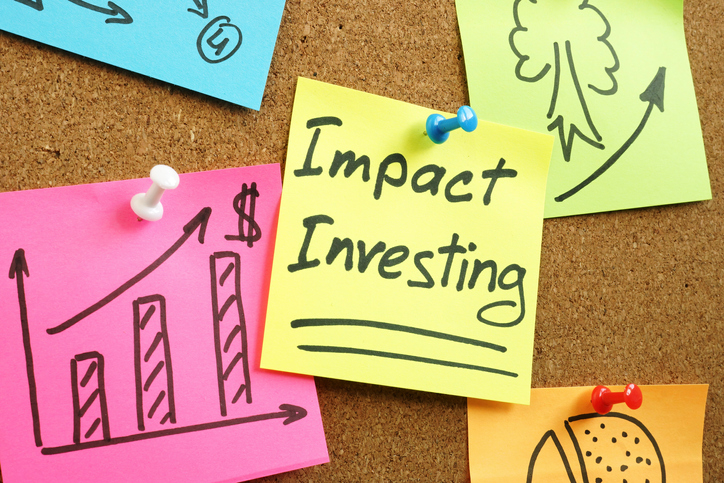For the first time in over a year, there seems to be a light at the end of the tunnel.
Not to say that there aren’t a number of hurdles to get over, but business is beginning to return to a sense of normalcy.
With vaccines rolling out, mask mandates loosening and even international travel opening back up, there’s a feeling of (cautious) optimism in the air.
As the dust continues to settle, organizations the world over are looking at their cash reserves and are left with a choice: do we remain cautious, waiting for the other shoe to drop, or is now the time to take the leap, and invest after a year of incredible challenges to seize a competitive advantage?
Which camp you ultimately fall into is due to a number of factors, but overall, there seems to be a disconnect between what experts believe the market is showing and what people are actually doing.
During our webinar with Discover we asked the audience that very question, where does your organization stand with how you’re treating your cash reserves? And the answer further cemented that market disconnect.
Jeffrey Clennon, Director of Cash Management at Discover, said that he expected a vast majority to answer that they have a large pool of cash reserves and are looking for the best way to invest while balancing potential risk.
And while a healthy 38% of participants echoed that sentiment, a majority 45% answered that they are still being extremely conservative with their cash.
Jeff Laborde, CFO here at JAGGAER brought up an interesting reminder stating, “certain verticals were affected more so than others. When you look at the travel industry, revenue streams become basically zero, so it makes sense that in those areas the cash hoarding mentality will linger.”
When you break things down it isn’t all that surprising.
People are jaded from the pandemic and rightfully so. Many organizations were burnt from the fallout, leaving a lasting impression that no one will soon forget.
The Case for Investment
While I can’t fault anyone for being overly cautious, I would like to make a few points to the case of investment.
1. Cash is no good if you don’t spend it
There comes a point when you have to ask, “how conservative is too conservative with my cash?”.
I’ve always gravitated towards savings, but eventually the purpose of money is to be spent.
The winners won’t be whoever has the most cash in the bank, but instead will be whoever learned from the lessons of the past to plan and prepare for the future. A cash buffer will only get you so far if another tragedy strikes.
Cash can always run out but investing in the right plan and infrastructure to move forward won’t.
2. Risk has always been around, and will continue to be
Anyone in the finance world is no stranger to risk. That’s what any investment is. But the saying, “you have to spend money to make money,” still holds true.
and while we can hope that another disruption on the scale of the pandemic doesn’t pop back up, we can be sure that something will.
Whether that’s a natural disaster, pollical fallout, geographic risk, or any other, risk is a fact of life. Investing wisely will always be the key to managing risk while also seeing a return.
3. Investment is a trickle effect
In a similar fashion to how newly loosened restrictions (bringing consumer investment) on travel will stimulate entire economies, so too will internal investment stimulate your organization.
One smart investment leads to another, and eventually the domino effect will take over. Particularly in areas such as digital transformation can the effects start to multiply quickly.
4. Business is about seizing opportunity
The poll does show that a majority of companies are being cautious with investment, but it also shows that a number are actively looking for areas to invest.
This split represents a huge opportunity for those that invest wisely to get a sizeable competitive advantage over those that decide to wait and see.
Investing Wisely to Manage Risk
The main focus from this webinar was to look at the way forward for organizations, and that ultimately comes down to where to invest and spend both time and money, that will give the most return while mitigating potential risks.
There are five key areas to consider investing in that will set our organizations up for success moving forward.
1. Digital transformation
For the last 5-10 years this topic has been brought up repeatedly in meetings and made headlines, but the reality is that little progress has actually been made. Our study with IPG shows that procurement in particular is still weighted heavily towards operational activities as opposed to strategic.
The good news is that this is changing. Digital transformation is becoming a top priority for senior leaders across the industry, but this needs to be met with tangible investment and progress.
Chris Sawchuk, Principal Advisory Leader at The Hackett Group shed some light on this saying, “We did a study a year ago, fresh into the pandemic and all of that uncertainty, and a huge 77% of people said that they will be moderately or aggressively ramping up their digital investments, and that jumped to 87% when we ran the same survey a few months ago.”
That’s not a surprising number considering the impact that technology can have on things like visibility and risk, but even still, some are continuing to wait.
Digital transformation is a long process, and something that won’t happen overnight. Waiting to invest until the “perfect time” is a mistake because that doesn’t exist.
Sawchuk went on underscore the importance of digital investment saying, “it’s fundamental that you cannot become a top performing world-class organization without making an outsized investment in technology”.
Nothing will provide as dramatic of a boost to the bottom line as investing (wisely) in technologies to help automate and streamline routine work while empowering people to become more strategic.
2. Risk management
Unsurprisingly this is one of the top focuses for procurement and financial leaders according to The Hackett Group’s report.
Investing in risk management will look different at every company but there are two key ways to go about it.
First is to lean into digital transformation, and the adoption of predictive and prescriptive analytics, advanced modeling and artificial intelligence (AI).
This will allow for a proactive and data driven response to get ahead of risks and mitigate them effectively, like with JAGGAER’s On-Time Delivery Predictor that can predict if a shipment will arrive late before it’s even ordered (with up to 95% accuracy).
Second is to invest in your people and processes. Creating a comprehensive crisis management playbook is essential today. The pandemic highlighted just how poorly prepared we all were for a true global disruption. Now there’s no excuse for it to catch us off-guard again.
More disruptions will happen, but those who invest in proactive solutions and responses will be much better prepared for them.
3. Corporate social responsibility (CSR)
CSR, much like these other suggestions, is something that has been rising in popularity over the years.
It’s no longer a publicity stunt, it’s becoming a core business focus and something that attracts buyers and suppliers alike.
When it comes to CSR and sustainability there isn’t a single RFP that’s come in from clients where those two topics aren’t near the top of the list of evaluation criteria.
It’s not just a good thing to do for the planet or for your image, it can dramatically increase your bottom line and supplier relationships if invested in correctly.
4. Supplier diversity
Much like CSR, supplier diversity is attracting a spotlight recently. The benefits that building a supplier diversity program can have on business are becoming well documented, and with all of the support growing around this movement, starting a program of your own is easier than ever.
More than just a box to tick off, supplier diversity can impact the bottom line, agility, innovation, and can be a catalyst for larger business growth.
5. Talent
Speaking of the investment ‘trickle effect,’ digital transformation, CSR and supplier diversity all have one thing in common: they influence talent.
Procurement needs top, new talent who bring fresh perspectives and ideas to compliment incumbents.
The new generation of talent wants to come to a workplace that’s innovative. They want the new technology, and they want to figure out ways to make it work for them. New talent doesn’t want to be stuck doing repetitive, paper-based tasks, they want to work on strategy and data.
Bringing in new talent will be a wave of new ideas and a wave of technologically savvy people who can help bridge the gap towards full digital transformation and is certainly an investment worth making.
It’s time to be bold and to take the leap. Being conservative with your cash will only get you so far.
No matter if you focus on one of the areas listed above or spread out to all five, I know you’ll reap the benefits long before the competition even gets started.





